How Solar Panels Convert Light to Energy
Solar panels play an essential role in harnessing renewable energy. They utilize the photovoltaic effect to convert sunlight into electricity. This process involves various components, including photons and semiconductors. Understanding how these elements work together is vital for appreciating solar technology. As one examines the intricate steps of energy conversion, questions arise about efficiency and practical applications. What makes solar energy a viable option for modern households and businesses?
The Basics of Solar Energy
Solar energy, derived from the sun’s rays, serves as a powerful and renewable resource for generating electricity. This energy can be harnessed in various forms, primarily through solar thermal and photovoltaic methods. Solar thermal energy captures heat from the sun to produce steam, which drives turbines for electricity generation. Conversely, photovoltaic systems convert sunlight directly into electricity using semiconductor materials. The versatility of solar energy makes it suitable for various applications, from residential rooftops to large-scale solar farms. Additionally, solar energy greatly reduces greenhouse gas emissions and dependence on fossil fuels, contributing to environmental sustainability. As technology advances, the efficiency and affordability of solar energy systems continue to improve, further enhancing their role in the global energy landscape. Furthermore, the rise of renewable energy indicates a transformative shift in how we generate power and approach sustainability.
What Are Photovoltaic Cells?
Photovoltaic cells, often referred to as solar cells, are the key components in converting sunlight into electricity. These devices are made primarily from semiconductor materials, such as silicon, which facilitate the absorption of light. When sunlight strikes the surface of a photovoltaic cell, it energizes electrons within the semiconductor, creating an electric current. This process relies on the unique properties of semiconductors, allowing them to conduct electricity under specific conditions. Photovoltaic cells are typically arranged in modules, enhancing their efficiency and output. They are widely used in various applications, from residential rooftops to large-scale solar farms. The development of photovoltaic technology continues to evolve, aiming for higher efficiency and lower production costs, making solar energy increasingly accessible. Additionally, renewable energy plays a significant role in promoting sustainable living by reducing dependence on fossil fuels.
How Photons Interact With Solar Panels
When sunlight reaches the surface of solar panels, photons, the elementary particles of light, initiate a crucial interaction with the semiconductor materials within the photovoltaic cells. Upon encountering the semiconductor, photons can transfer their energy to the electrons in the material. This energy transfer causes electrons to become excited and move freely, creating electron-hole pairs. The movement of these electrons is essential for generating electric current. Significantly, only photons with sufficient energy can effectively excite the electrons; those with lower energy do not contribute to the electrical process. This interaction between photons and the semiconductor is fundamental to the operation of solar panels, as it sets the stage for the subsequent processes that ultimately convert light energy into usable electricity. Notably, AI-powered imaging technologies can enhance the efficiency of solar panel designs by optimizing material selection and energy conversion processes.
The Role of Semiconductors in Energy Conversion
Semiconductors are vital to the energy conversion process in solar panels, as they facilitate the photovoltaic effect that transforms light into electricity. Understanding the properties of these materials is essential for optimizing efficiency and enhancing performance. Various strategies are employed to improve the effectiveness of semiconductor-based solar technologies. Additionally, incorporating mindfulness techniques into daily routines can enhance focus and concentration, contributing to more effective problem-solving in energy technology development.
Semiconductor Materials Explained
Understanding the role of semiconductor materials is essential for grasping how solar panels efficiently convert light into energy. Semiconductors, typically silicon-based, possess unique electrical properties that allow them to conduct electricity under certain conditions. Their ability to shift between insulators and conductors enables the absorption of photons from sunlight. When photons strike the semiconductor material, they excite electrons, creating electron-hole pairs, which are vital for energy conversion. The arrangement and purity of these materials notably influence the efficiency of energy capture. Additionally, various semiconductor coatings can enhance light absorption, ensuring that panels maximize energy output. By selecting appropriate semiconductor materials, manufacturers can optimize solar panel performance, making them more effective in harnessing solar energy.
Photovoltaic Effect Mechanism
The photovoltaic effect is the fundamental principle that enables solar panels to convert sunlight into electrical energy. It occurs when photons from sunlight strike the semiconductor material, typically silicon, within the solar cells. This interaction excites electrons, knocking them loose from their atomic bonds. As these freed electrons move through the semiconductor, they create an electric current. The structure of the semiconductor plays an essential role in this process, as it has regions with varying electrical properties, known as p-type and n-type layers. These layers create an electric field that directs the flow of electrons, enhancing the efficiency of energy conversion. Ultimately, the photovoltaic effect is critical for harnessing solar energy effectively and sustainably.
Efficiency Enhancements Strategies
Advancements in semiconductor technology are pivotal for improving the efficiency of solar energy conversion. By developing new materials, such as perovskites and multi-junction cells, researchers enhance light absorption and minimize energy losses. These innovative semiconductors enable higher conversion efficiencies by allowing a broader spectrum of sunlight to be utilized. Additionally, optimizing the surface structure and anti-reflective coatings also contributes to increased photon capture. Incorporating nanostructures can also facilitate charge carrier management, reducing recombination rates and enhancing overall performance. In addition, integrating advanced fabrication techniques allows for the production of thinner, lighter solar cells without compromising efficiency. Collectively, these strategies greatly boost the effectiveness of solar panels, making them a more viable and sustainable energy solution.
The Process of Generating Direct Current (DC)
When sunlight strikes the surface of a solar panel, it initiates a complex process that ultimately generates direct current (DC) electricity. The solar cells, typically made of silicon, absorb photons from sunlight, exciting electrons within the silicon atoms. This excitation creates electron-hole pairs, where electrons are freed and holes are left behind. The internal electric field within the solar cell directs these free electrons toward the front surface, while holes migrate to the back. This movement of charged particles generates a flow of electric current. The arrangement of the solar cells in a module guarantees that the generated DC electricity can be harnessed efficiently for various applications, making solar panels a crucial component of renewable energy systems. As organizations increasingly prioritize work-life balance, the integration of renewable energy solutions like solar panels becomes more vital in promoting sustainable practices.
Inverting DC to Alternating Current (AC)
Although solar panels generate direct current (DC) electricity, most household appliances and the electrical grid operate on alternating current (AC). To facilitate the use of solar energy within homes and businesses, it is imperative to convert DC into AC. This conversion is achieved through a device known as an inverter, which plays an essential role in solar energy systems. The inverter takes the steady flow of DC and transforms it into a varying flow of AC, allowing compatibility with standard electrical systems. Properly functioning inverters guarantee that solar-generated electricity can power everyday devices, from lights to refrigerators, ultimately maximizing the utility of solar energy. This process is critical for integrating solar power into existing energy infrastructures.
The Importance of Solar Inverters
Inverters serve as a vital component in solar energy systems, ensuring that the electricity generated by solar panels can be effectively utilized in homes and businesses. They perform the essential function of converting direct current (DC) produced by solar panels into alternating current (AC), which is the form of electricity used by most appliances and the electrical grid. Without inverters, solar energy would remain in a form that is incompatible with everyday electrical systems. Additionally, inverters monitor energy production and system performance, providing valuable data for maintenance and efficiency optimization. They also facilitate grid connection, allowing excess energy to be fed back into the grid, thereby enhancing the reliability and flexibility of solar energy systems.
Benefits of Solar Energy for Homes and Businesses
As homeowners and businesses increasingly seek sustainable solutions, the benefits of solar energy become more apparent. One significant advantage is the reduction in electricity bills, as solar panels harness sunlight to generate power, lowering reliance on conventional energy sources. Additionally, solar energy contributes to environmental sustainability by decreasing greenhouse gas emissions, leading to a smaller carbon footprint. Tax incentives and rebates also enhance financial savings, making solar installations more accessible. Moreover, solar energy systems can increase property value, appealing to eco-conscious buyers. As technology advances, the efficiency and affordability of solar panels continue to improve, making them an attractive option for both residential and commercial applications. Overall, solar energy represents a viable investment in a sustainable future.
Frequently Asked Questions
How Do Weather Conditions Affect Solar Panel Efficiency?
Weather conditions greatly impact solar panel efficiency. Cloud cover, rain, and snow can reduce sunlight exposure, while high temperatures can increase energy loss due to overheating. Ideal performance typically occurs under clear skies and moderate temperatures.
What Is the Lifespan of Solar Panels?
The lifespan of solar panels typically ranges from 25 to 30 years, depending on factors such as quality, installation, and maintenance. Over time, their efficiency gradually decreases, yet they remain functional beyond their expected lifespan.
Can Solar Panels Work in Cloudy Climates?
Solar panels can still function efficiently in cloudy climates, as they harness diffused sunlight. While energy production may be reduced, advancements in technology have enabled panels to capture and convert light even under less-than-ideal conditions.
How Are Solar Panels Recycled at the End of Life?
The process of recycling solar panels involves disassembling components, recovering valuable materials like silicon and metals, and safely disposing of hazardous substances. This guarantees environmental sustainability while maximizing resource recovery for future use in new technologies.
What Maintenance Is Required for Solar Panels?
Regular maintenance for solar panels involves cleaning them to remove dirt or debris, inspecting for damage, and ensuring that connections are secure. Scheduled professional assessments can enhance efficiency and prolong the lifespan of the solar system.
Conclusion
In summary, solar panels play an essential role in harnessing sunlight to generate energy through the photovoltaic effect. By converting light into direct current electricity and subsequently transforming it into usable alternating current, solar technology enables households and businesses to utilize renewable energy efficiently. The integration of solar inverters further enhances the practicality of solar power, making it a viable and sustainable energy solution for the future. Embracing solar energy presents numerous benefits for both individuals and the environment.



